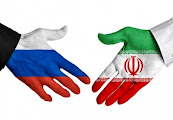The Israeli military said it had completed its air attack on
Saturday morning, hitting missile manufacturing sites and aerial defences in
several areas inside Iran. Israel’s public broadcaster said three waves of
strikes had been completed.
Iranian air defences said Israel attacked military targets
in the provinces of Tehran, Khuzestan and Ilam and that “limited damage” was
caused to some locations.
A
senior US official described the strikes as “extensive”, “precise” and against
military targets across Iran. The US did not participate in the strikes, the
official said, but worked with the Israeli government to encourage a low-risk
attack with no civilian harm.
“The effect was a proportionate self-defence response. The
effect is to deter future attacks and to degrade Iran’s abilities to launch
future attacks.”
The
official stressed that the US considered the operation to be an “end to the
exchange of fire between Israel and Iran”.
“This should be the end of the direct military exchange
between Israel and Iran – we had a direct exchange in April and that was closed
off and now we’ve had this direct exchange again.”
At least seven explosions were reported over the capital,
Tehran, and nearby Karaj as well as the eastern city of Mashhad just after
2.30am local time on Saturday, as Israeli jets struck military targets in the
country.
Iranian media initially appeared to downplay the airstrikes,
noting that Tehran’s airport was operating normally. State TV reported several
strong explosions heard around the capital, while the state news agency, IRNA,
said there had been no casualties. There was no immediate official comment
about the source of explosions, which Iranian news outlets reported were under
investigation. Air defence systems were activated around the country.
In a
statement, the Israel Defense Forces (IDF) took the rare step of acknowledging
the attack on Iran, in a confirmation that a decades-old shadow war between the
enemy states has now firmly moved into the open.
Before Israel launched the airstrikes on Saturday, Iran had
repeatedly warned there were “no red lines” for Iran on the issue of defending
itself. Last week, the country’s foreign minister, Abbas Araghchi, also
indirectly threatened US forces against operating in Israel after Washington
dispatched a Thaad advanced missile defence system battery and 100 troops to
aid its ally amid the tensions.
The White House was notified shortly before Israel carried
out airstrikes on Iran, a spokesperson said. The US secretary of state, Antony
Blinken, had said on Wednesday that Israel’s retaliation should not lead to
greater escalation.






